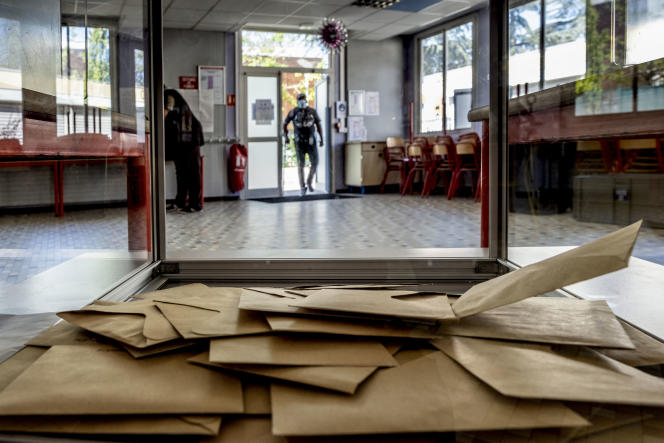The participation in the first round of the legislative elections reached 18.43%, Sunday June 12 at noon, according to the Ministry of the Interior. A figure down 0.8 points from 2017, when it stood at 19.24%.
It is also down sharply compared to the first round of the 2022 presidential election, where it reached 25.48% at noon, and is lower than that of the 2012 legislative elections at the same time (21.06%). Lot is the department that voted the most at noon on Sunday (27.8%), ahead of Cantal (26.35%), Jura (25.69%), Dordogne (25.19%) and Gers (24.86%). The lowest turnout was recorded in Seine-Saint-Denis with 9.85%.
The dreaded massive abstention – beyond 50% of the 48 million voters – could arbitrate the proxy match between Emmanuel Macron, re-elected for a second term a few weeks ago, and Jean-Luc Mélenchon, who came in third. place of the presidential election and now leader of the left. On the far right, the National Rally of Marine Le Pen displays, for its part, measured ambitions.
On the left, the New Popular Ecological and Social Union (Nupes) is neck and neck in terms of voting intentions with Together!, a coalition of parties close to the current presidential majority: La République en Marche, the MoDem and Horizons in particular. In the second round on Sunday June 19, the reserves of votes could be lacking in the Nupes to hope to overthrow the current majority, unless there is a strong mobilization of the abstainers from the first round.
Abstention in the legislative elections has only increased since the 1993 election, rising from 31% that year to 51.3% in 2017. It primarily affects young people and the working classes.














